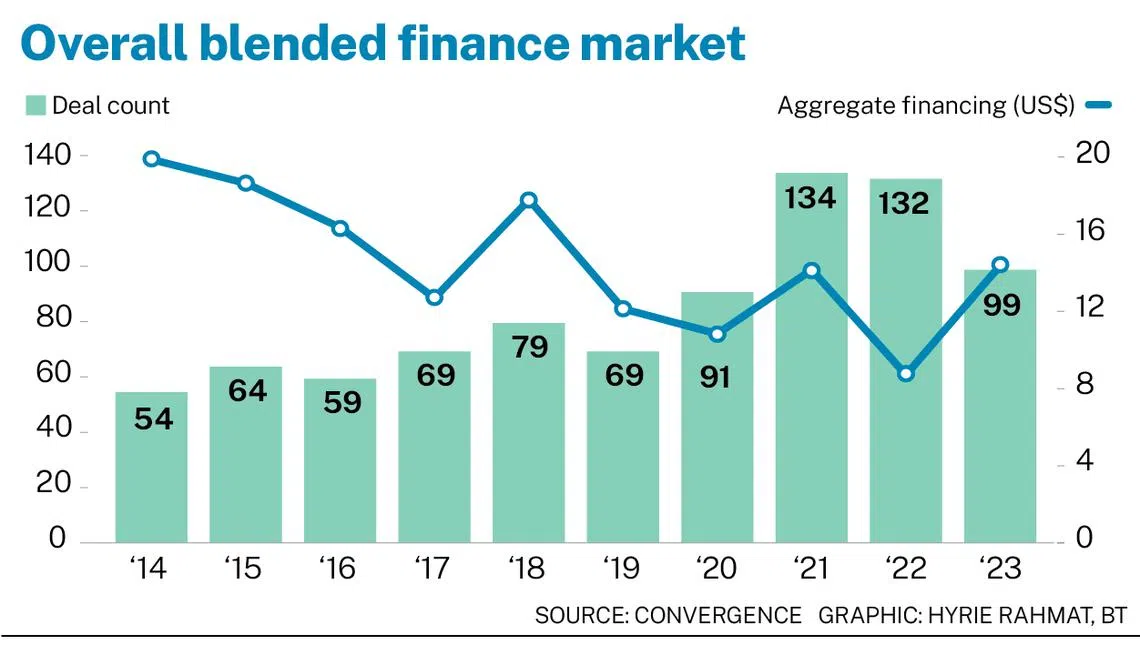Blended finance deal value hits 5-year high of US$15 billion in 2023
Development finance institutions, multilateral development banks stepped up

BLENDED finance deal value rose 66.7 per cent to hit US$15 billion in 2023, marking a five-year high, said a report by global blended finance network Convergence.
The total number of deals fell 25 per cent, though, to 99.
This figure indicates that larger blended finance transactions are “coming to market with more regularity”, said Convergence in its report.
Blended finance is a capital-raising approach that leans on investors with higher risk appetites, such as development funds and philanthropists, to draw in commercial investors. It is commonly used to finance sustainable development in emerging markets.

Last year’s rebound in deal value came from an “unprecedented burst of action” following the COP28 climate conference, said Convergence.
One example: the SDG Loan Fund – a US$1.11-billion vehicle by Allianz Global Investors and the Dutch Entrepreneurial Development Bank, backed by the John D and Catherine T MacArthur Foundation.
The fund is focused on growing the exposure of institutional investors to climate, agriculture, and financial services in emerging markets.
Climate finance remains a strong theme within the blended finance market. The total value of climate blended finance deals more than doubled last year to US$11.6 billion, from US$5.6 billion in 2022.
Cheque sizes have also grown. Some 48 per cent of 2023 climate blended finance deals exceeded US$100 million, compared with 24 per cent in 2022 and 41 per cent in 2021.
DFIs and MDBs step up
Development finance institutions (DFIs) and multilateral development banks (MDBs) increased their commitments by 140 per cent last year to US$4.9 billion.
Private-sector financing rose in tandem, from US$2.9 billion in 2022 to US$3.7 billion last year.
Official development assistance (ODA) – typically provided by developed countries’ governments to developing ones – fell to US$961 million, from US$1.1 billion in 2022.
The presence of DFIs and MDBs tends to reduce the amount of ODA necessary to draw in private sector investment, Convergence said. The recent increase in DFI and MDB investments has therefore “stretched ODA dollars further”, it added.
Convergence chief executive Joan Larrea said the 2023 data suggest blended finance is entering the mainstream.
“We are taking steps in the right direction to close the Sustainable Development Goals’ financing gap; but we must stride farther and faster to raise the trillions needed to achieve the 2030 agenda,” said Larrea.
Calls for investors to allocate more capital into blended finance have been growing, including in Singapore. Last year, the city-state launched a blended finance initiative called Fast-P – short for Financing Asia’s Transition Partnership – that aims to invest up to US$5 billion to support Asia’s green transition.
Decoding Asia newsletter: your guide to navigating Asia in a new global order. Sign up here to get Decoding Asia newsletter. Delivered to your inbox. Free.
Copyright SPH Media. All rights reserved.


